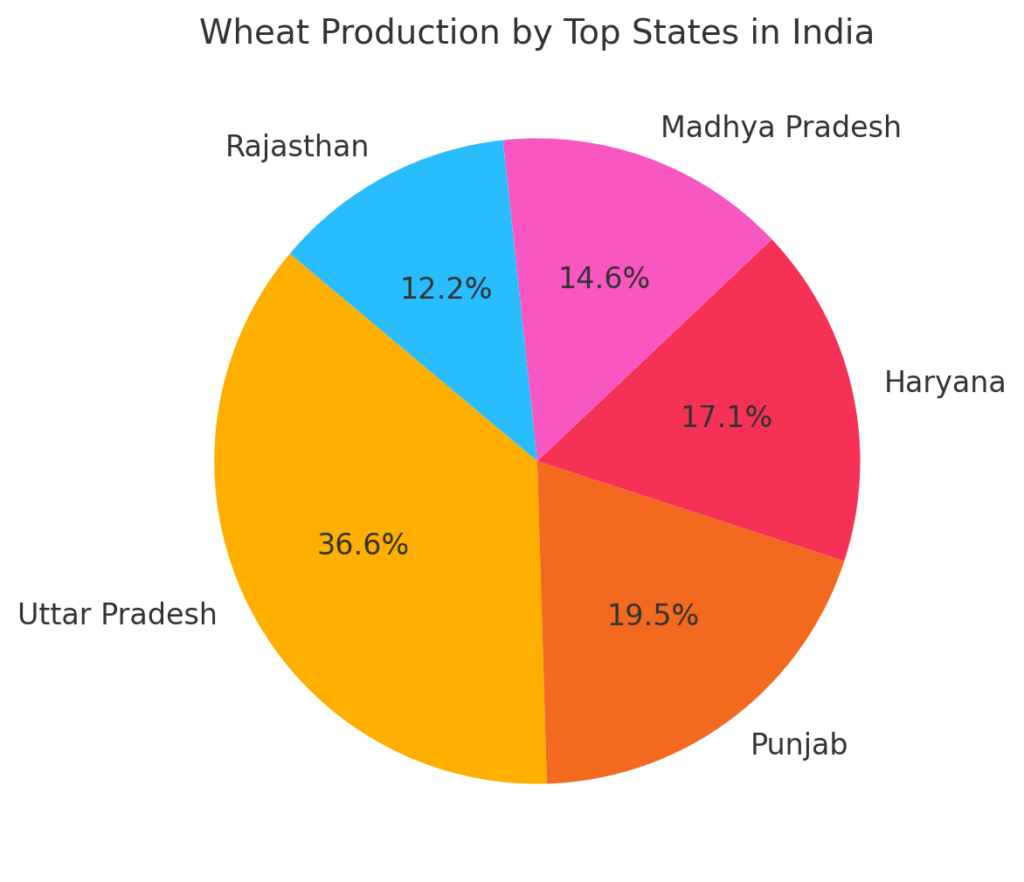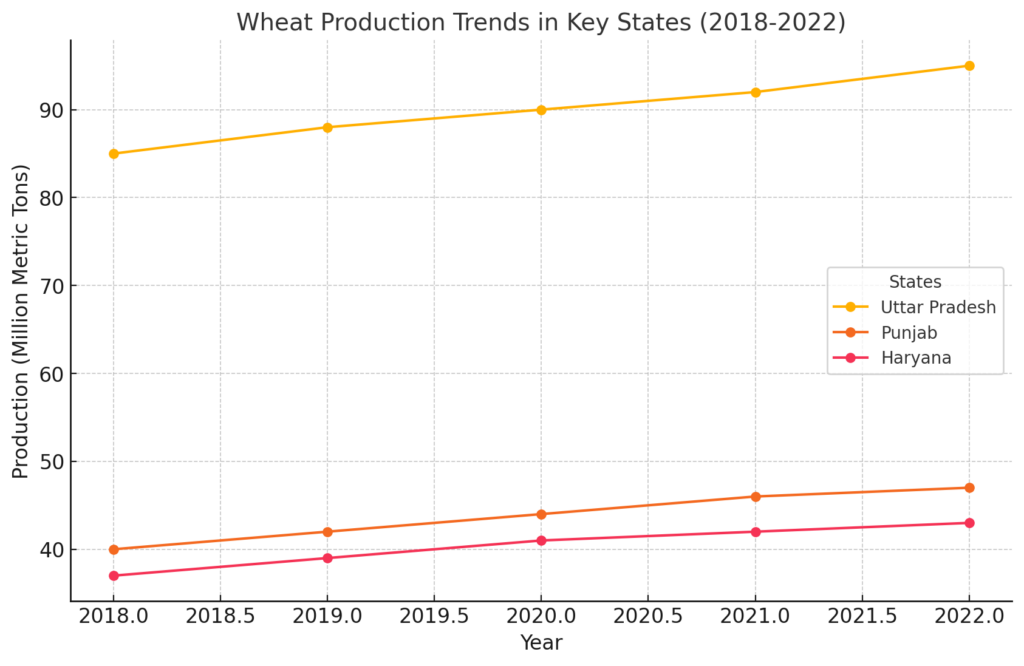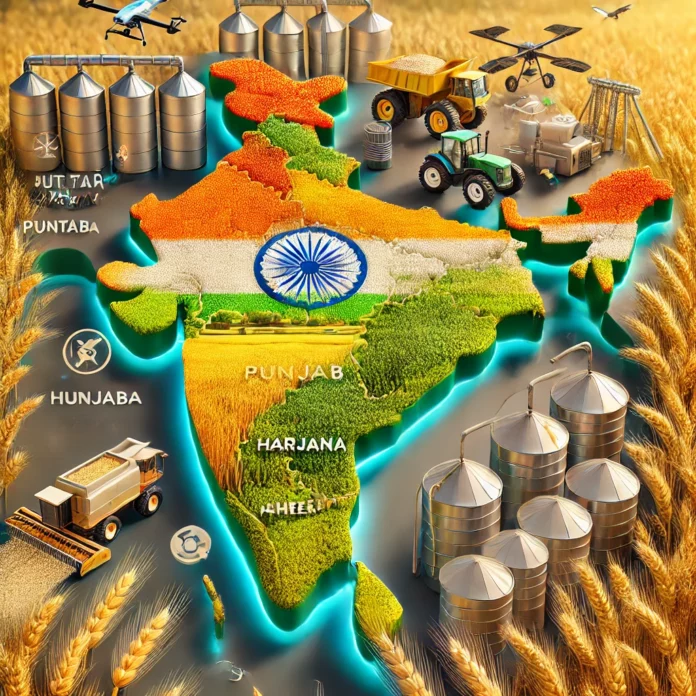India stands as the second-largest wheat producer in the world, thanks to its fertile lands and favorable climatic conditions. With wheat being a staple food for millions of Indians, the country’s largest producers play a significant role in ensuring food security and contributing to global grain markets. This article explores the leading wheat-producing states and companies in India, their innovations, and their agricultural importance.

1. Punjab: The Grain Bowl of India
Punjab is known as the “Granary of India,” contributing significantly to the country’s wheat production.
- Production Share: Accounts for approximately 16% of India’s total wheat output.
- Key Features: High-yield varieties, advanced irrigation systems, and mechanized farming.
- Farming Practices: Farmers in Punjab adopt modern techniques like zero-tillage and crop rotation for better yields.
Punjab’s robust agricultural infrastructure makes it a leader in wheat production.
2. Uttar Pradesh: The Wheat Powerhouse
Uttar Pradesh is the largest wheat-producing state in India.
- Production Share: Contributes over 30% of the country’s wheat output.
- Key Regions: The fertile Indo-Gangetic plains support large-scale wheat cultivation.
- Government Support: Farmers benefit from subsidies, minimum support prices (MSP), and efficient procurement systems.
With its vast arable land and supportive policies, Uttar Pradesh is crucial to India’s wheat economy.
3. Haryana: A Key Contributor to the Green Revolution
Haryana’s role in the Green Revolution cemented its position as a top wheat producer.
- Production Share: Produces around 14% of India’s wheat.
- Key Practices: Extensive use of high-yield seeds and advanced irrigation techniques like drip and sprinkler systems.
- Exports: Haryana contributes significantly to India’s wheat export capacity.
Haryana’s efficient farming practices and high productivity make it a leader in wheat production.
4. Madhya Pradesh: The Emerging Wheat Giant
Madhya Pradesh has seen tremendous growth in wheat production in recent years.
- Production Share: Accounts for about 12% of national output.
- Key Regions: Areas like Sehore, Vidisha, and Hoshangabad are known for high-quality wheat.
- Innovations: Adoption of organic farming and sustainable practices.
Madhya Pradesh’s rapid development in agriculture has positioned it as an emerging powerhouse.
5. Rajasthan: Quality Wheat Production
Rajasthan is known for producing high-quality wheat suited for export markets.
- Production Share: Contributes approximately 10% of India’s wheat output.
- Key Regions: Jaipur, Sikar, and Alwar lead wheat cultivation.
- Challenges: Limited water resources have prompted the adoption of drought-resistant varieties.
Rajasthan’s focus on quality over quantity has made it a significant player in India’s wheat industry.
6. Major Wheat-Producing Companies in India
In addition to states, several companies and cooperatives play vital roles in India’s wheat ecosystem:
- ITC Limited: A leader in processed wheat products like flour, biscuits, and ready-to-eat foods.
- Patanjali Ayurved: Focuses on organic and whole-grain wheat products.
- Adani Agri Logistics: Handles procurement, storage, and supply chain management for wheat.
- Amul (Gujarat Cooperative Milk Marketing Federation): Uses wheat for producing products like biscuits and bakery items.
These companies ensure efficient processing, distribution, and availability of wheat-based products across India and beyond.

Technological Innovations in Indian Wheat Production
India’s wheat producers are adopting advanced technologies to enhance productivity:
- High-Yield Varieties: Development of drought-resistant and high-nutrient varieties by research institutions like ICAR.
- Precision Farming: Use of AI and IoT for monitoring crop health and optimizing resources.
- Sustainable Practices: Focus on reducing water and chemical usage to protect the environment.
Conclusion
India’s largest wheat producers, from states like Uttar Pradesh and Punjab to companies like ITC and Patanjali, are essential to meeting the country’s food security and export demands. With a blend of traditional practices and modern technology, India continues to strengthen its position as a global agricultural powerhouse.

